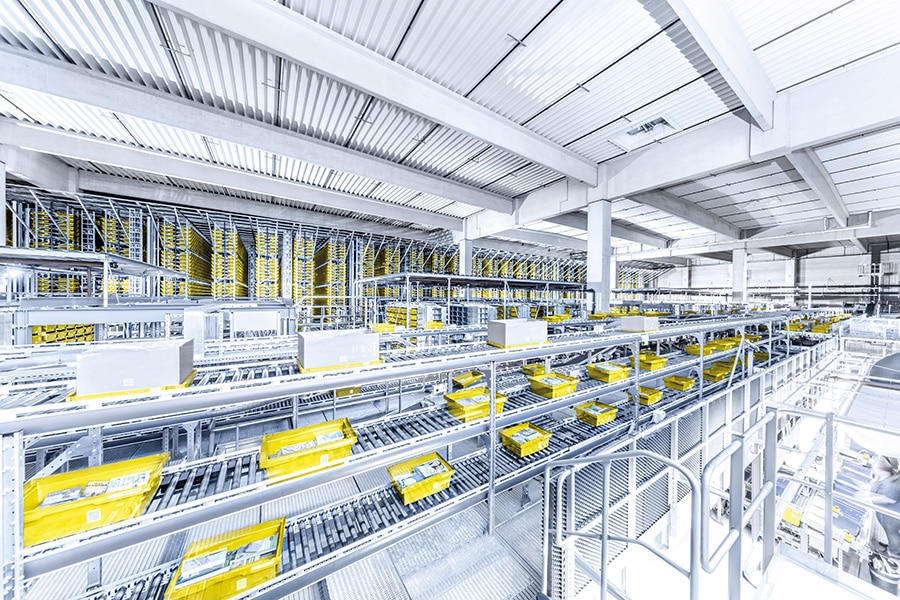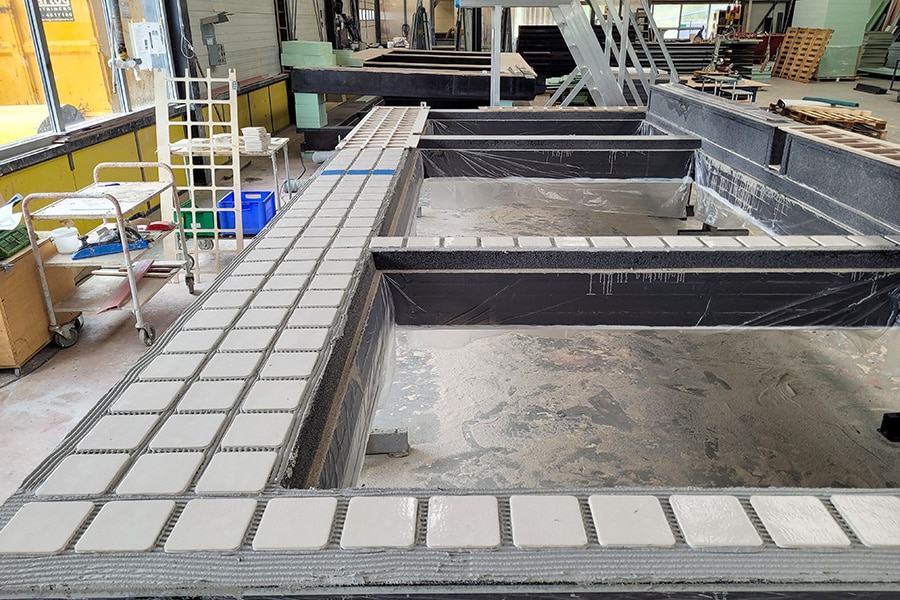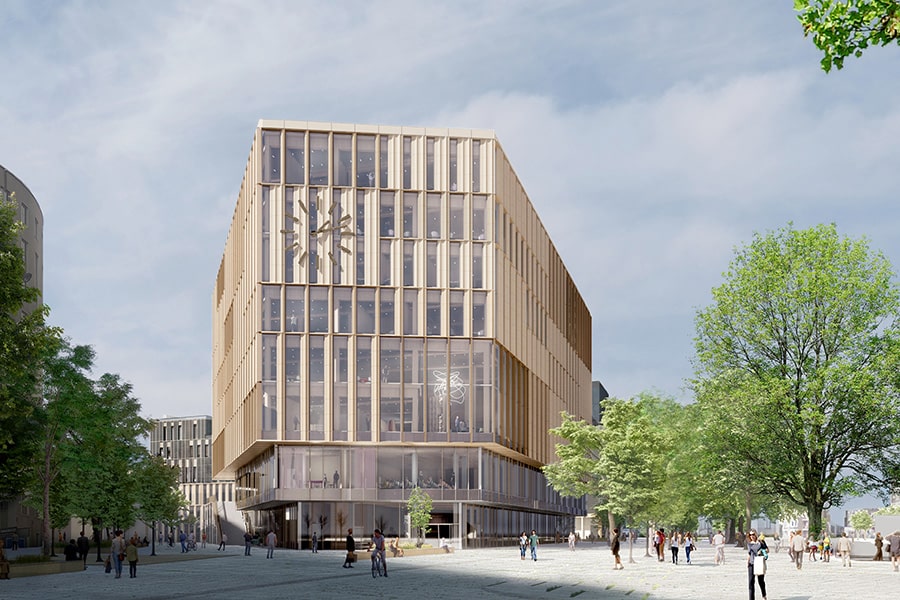
Toward a zero-emission construction site
In construction, industry and infrastructure projects, numerous initiatives are underway to reduce CO2- and nitrogen emissions. Not surprisingly, because projects are increasingly being awarded on the basis of the Most Economically Advantageous Tender (EMVI), in which sustainability is leading alongside price. Moreover, the climate goals for 2030 and 2050 are fast approaching. By recycling materials, purchasing green electricity and switching to Aspen gasoline and synthetic diesel, many companies have already taken a step in the right direction. However: raw materials are becoming increasingly scarce. The future of a sustainable, emission-free construction site is therefore closer than we might think. In this regard, we can no longer avoid electrification of our construction and infra materials and equipment.
By switching from fully fuel-fired to hybrid generators, contractors not only save the environment, but noise pollution and fuel costs are also significantly reduced. Moreover, the generator lasts much longer. In places where fuel-fired generators are no longer allowed at all - such as in more and more places in the Randstad - electric equipment based on battery systems with inverters is an excellent solution, possibly in combination with solar energy. Top Systems offers an extensive program of technical components for standalone and hybrid energy storage systems. "Our renewable energy systems are used for hybrid generators, electric construction huts, shovel chains, saw trucks, asphalt trucks, construction site lighting and site security, among other things," says sector specialist Construction, Installation and Infrastructure Ronald van den Berg. "New to our product range is the PowerBlock 24 from Power Modules. This 24 kVA power module can easily be placed in any shipping container."
Substantial savings
The PowerBlock can be operated as a standalone 3-phase power module (3×8 kVA) or as a hybrid system, as desired. "In the latter and most frequently chosen option, the generator always charges the battery system in a short time and at full load, after which the batteries power all electric machines and tools," said Van den Berg. "And also when more power is required than the batteries can supply, the generator automatically jumps in. Thanks to the energy module, up to 90% can be saved on generator running time, resulting in 90% fewer emissions of nitrogen, CO2, sulfur, soot particles and other particulates from exhaust gases. Noise pollution to the environment is minimized and substantial savings can be made on maintenance."
The PowerBlock is a plug-and-play power module. "At the base of the system are three 8 kVA Victron Quattro inverter-acid charger combos with two power inputs (generator and mains) and a 43.2 kWh battery pack from MG Energy Systems. The battery system is protected and monitored 24/7 by an MG Master Battery Management Controller against overcharging, over discharging and over or under temperature. The Battery Management Controller also ensures proper balancing of the batteries and monitors important parameters such as battery status and energy consumption. A Victron Cerbo GX communication module provides control and monitoring of the power module, while a Victron Cerbo GX Touch 50 touchscreen control panel provides real-time visibility of all values for the operator.
The PowerBlock is equipped with its own Internet connection that makes it easy to read and monitor the values remotely and through the Victron Remote Management portal."

Combination with solar panels
If desired, solar panels can be installed on top of the construction site container to feed the batteries during the day, Van den Berg said. "A Victron SmartSolar MPPT solar charge controller in the PowerBlock converts the generated solar energy into charging current for the batteries. In addition, the PowerBlock can be used as an emergency power system or for Peak Shaving."
Plug-and-play energy module
Responsible for the engineering and production of the PowerBlock energy modules is Power Modules. "Thanks to the compact dimensions of 2.20 x 0.50 x 1.88 meters (lxwxh), the PowerBlocks can be fitted effortlessly into large as well as smaller containers," says Peter Bode, director of Power Modules. "Both crosswise and lengthwise, making optimal use of the available space. Moreover, the power modules fit through a normal door opening. All PowerBlocks come with an instruction manual included. The modules function plug-and-play and can easily be placed standalone or next to a generator. After connecting the input and output connectors, the module can be turned on and the PowerBlock is operational."
Sophisticated suite of hardware and software products
The choice of Top Systems as a component supplier was a logical one, Bode emphasizes. "I originally come from the service, maintenance and repair of high-speed motor yachts. In this industry, Victron products have been a household name for years. Because Top Systems is Victron's number one supplier in the Netherlands, I am very familiar with the company and its employees. When developing the 24 kVA module, we jointly explored the possibilities of Victron and other energy systems. This led to a sophisticated package of hardware and software products that are continuously monitored and improved. By now, Top Systems and Power Modules are well acquainted with each other. We actively exchange data and knowledge, with the aim of optimizing the PowerBlock even further."
In addition to the 24 kVA module, there are also a PowerBlock 15 (15 kVA) and PowerBlock 30 (30 kVA). All batteries have UN38.3 certification and the power module complies with ADR2019 regulations, which cover the international transport of hazardous materials by road. This means that any transporter can and may safely transport the systems.
Clean and quiet work is rewarded
One of the PowerBlocks' recent customers is Dura Vermeer Materieel BV, which is highly committed to a sustainable and low-emission or zero-emission construction site. "More and more municipalities and provinces are asking for the use of low- or zero-emission materials and equipment. In tender projects, moreover, a clean and quiet way of working is increasingly rewarded," says Gino van Gemert, project coordinator at Dura Vermeer Materieel BV. "In the inner city of Amsterdam, 'zero-emission' is even demanded, and it is expected that other municipalities will soon follow. In order to continue to be awarded sufficient projects in the future, electrification of construction materials and equipment is therefore indispensable. A gigantic challenge in a rather conservative industry."
Dura Vermeer has been using hybrid generators for several years, he says. "Initially this involved lead-acid technology, which has now been replaced by modern lithium batteries. We also have hybrid scaffolding trucks, solar panel frames for above the construction site container and are investing in wind turbines. Almost all of our small and medium-sized equipment has been replaced by electric alternatives. For example, we are just about finished building ten emission-free shelters." In addition, Dura Vermeer has about twenty hybrid construction site containers, which are deployed on construction and infrastructure projects throughout the country. Eight of them are equipped with a PowerBlock. "During the construction of the first hybrid site truck three years ago, we came into contact with Top Systems, which supplied the energy storage system," said Van Gemert. "Once in contact, other questions came up as well. For example, regarding construction site containers. Through Top Systems, we were introduced to Power Modules, which built our PowerBlocks."

Confidence and convenience
"A big advantage is that the systems and interfaces in the shelters and construction site containers are largely the same," Van Gemert emphasizes. "This creates a lot of confidence among our mechanics and offers convenience in the use and monitoring of the systems. The PowerBlocks are regularly read remotely by us. In addition, regular updates are performed to further enhance operation and reliability. The low-emission or emission-free construction site is still in its infancy. The same naturally applies to the systems being developed for this purpose. However, as a construction and infrastructure company, we gladly embrace these developments. In this way we invest together with the market in clean and environmentally friendly construction."
In addition to Dura Vermeer Materieel BV, De Wit Aggregaten has also purchased several PowerBlocks. "We too see a growing demand for hybrid power systems. Especially in projects where voltage is needed 24/7, with varying power," says director Jaap de Wit. "Our hybrid systems respond to this perfectly. Where power is supplied during the day in combination with a generator for the electrical machines and tools, a battery system provides a silent power supply for the construction site lighting and security cameras at night. In addition, our hybrid systems find eager demand in the event industry." Because the rental of hybrid power systems is an entirely new market, De Wit Aggregates has chosen an extensive rental fleet with a variety of capacities and systems from various suppliers. Five containers have a PowerBlock and are currently being tested in practice.




